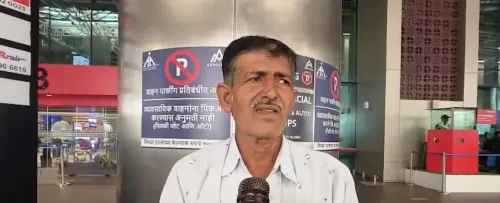How is TN Planning to Restore 100 Water Bodies?

Synopsis
Key Takeaways
- Restoration of 100 water bodies in Tamil Nadu.
- Funding of Rs 111 crore under PMKSY.
- Joint funding: 60% from Union and 40% from State.
- Project aims to enhance water storage and mitigate urban flooding.
- Certification for encroachment-free tanks planned.
Chennai, July 19 (NationPress) The Tamil Nadu Water Resources Department (WRD) is poised to revitalize 100 water bodies throughout the state as part of the Union government's Pradhan Mantri Krishi Sinchayee Yojana (PMKSY), with a financial allocation of Rs 111 crore.
Among these, 11 tanks are situated in the Chennai region, while the remaining 89 tanks are located in the Madurai region.
The initiative aims to rejuvenate these tanks to enhance water storage capacity, alleviate flooding, and boost irrigation potential. It will be funded jointly, with 60 percent from the Union government and 40 percent from the state government.
Tamil Nadu submitted the funding proposal under PMKSY in 2023 and has recently obtained the necessary administrative and financial approvals. WRD officials noted that the restoration will involve desilting, strengthening bunds, establishing bird islands, and addressing sewage inflows.
Each water body is anticipated to receive around Rs 1.5 crore. The Chief Engineer of the WRD’s Design, Support, and Construction Department mentioned that the project is expected to kick off by the end of 2025 and be completed by December 2026.
In the Chennai area, the identified 11 water bodies are found in suburban and upstream locales such as Tambaram, Thalambur, Chengalpet, and Thiruvallur.
The department has begun joint surveys with the revenue department to delineate tank boundaries and issue eviction notices to encroachers within 14 days. The sizes of these tanks range between 50 hectares and 165 hectares.
In the Madurai region, which encompasses the districts of Kallakuruchi, Madurai, Sivagangai, and Ramanathapuram, the WRD has targeted tanks that have experienced flooding over the past five years. In Kallakuruchi, tanks in Thyagadurgam, Kallakuruchi, and Thirunavalur will be restored, while in Sivagangai, the focus will be on tanks in Kallal, Sakkotai, and Devakottai.
The core city tanks of Madurai and those in RS Mangalam, Nainarkoil, Thiruvadanai, and Mudukulathur in Ramanathapuram will also undergo revival.
Officials indicated that the project aims not only to enhance water storage and reduce urban flooding but also to qualify these water bodies for the “encroachment-free” certification. This certification will be granted by the Ministry of Jal Shakti after thorough inspections.
“Once encroachments are addressed, we will seek the certification, ensuring the long-term conservation of these tanks,” the official added.










